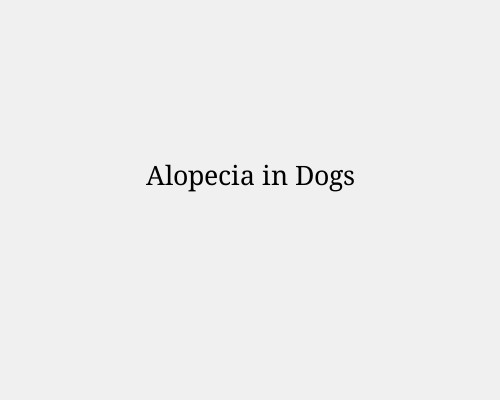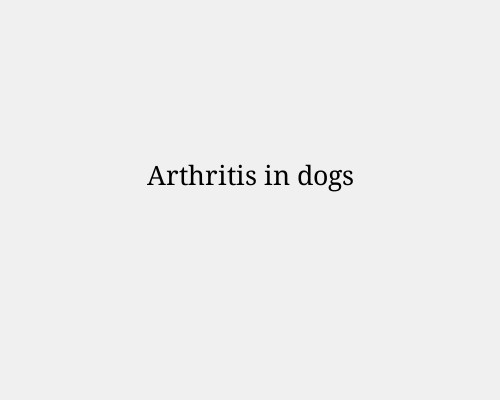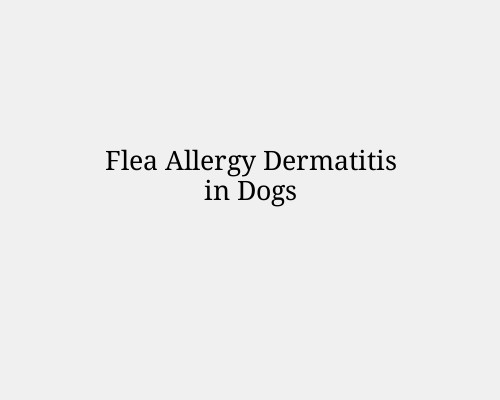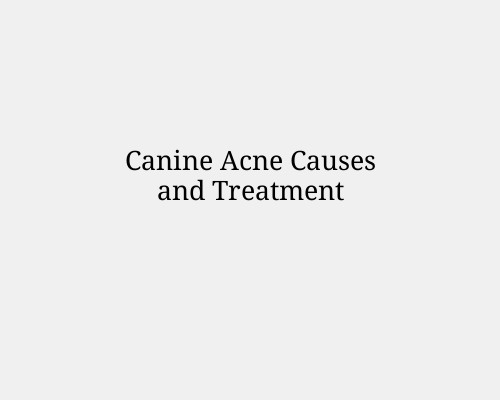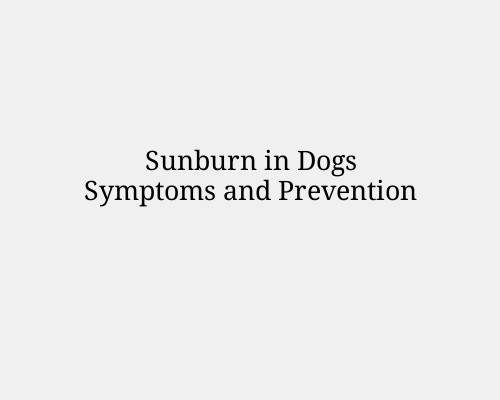Alopecia in Dogs
Alopecia in Dogs: Understanding Hair Loss Causes
Alopecia, or hair loss, in dogs is a common condition that can be caused by a range of underlying issues. It’s essential to identify the root cause to ensure your dog receives proper treatment. This article will explore the most common causes of alopecia, its symptoms, and potential treatment options.
![]()
Common Causes of Alopecia in Dogs
Allergies
Allergic reactions—whether from food, environmental factors like pollen, or contact allergens—are a leading cause of alopecia in dogs. Allergies often cause itching, redness, and inflammation, leading to excessive scratching or biting that can result in hair loss.
Parasites
Fleas, mites, and lice can irritate a dog’s skin and cause hair loss. Conditions like sarcoptic mange (scabies) or demodectic mange are known for creating bald patches and crusty lesions on the skin.
Hormonal Imbalances
Hormonal issues like hypothyroidism (underactive thyroid) or Cushing’s disease (excess cortisol production) are frequent causes of alopecia in dogs. Both conditions typically cause symmetrical hair loss along the body and may be accompanied by other symptoms like weight gain, lethargy, or skin changes.
Fungal or Bacterial Infections
Infections such as ringworm (a fungal infection) or bacterial skin infections can cause localized hair loss, redness, and scabbing. Ringworm is contagious and may present as circular bald patches.
Stress and Anxiety
Dogs may experience hair loss due to excessive grooming caused by stress, anxiety, or compulsive behaviors. This is known as psychogenic alopecia and is often associated with environmental stressors.
Nutritional Deficiencies
Poor-quality diets or imbalanced nutrition can cause alopecia over time. Inadequate intake of essential fatty acids, vitamins, and minerals can lead to dull coats, brittle hair, and shedding.
Genetics
Certain dog breeds are predisposed to hair loss or alopecia as part of their genetic makeup. Breeds like Dachshunds, Greyhounds, and Chinese Cresteds are more likely to experience alopecia.
Autoimmune Disorders
Conditions such as alopecia areata (an autoimmune disease that targets hair follicles) or pemphigus can cause patches of hair loss. These conditions are typically diagnosed through biopsy and blood work.
![]()
Symptoms Associated with Alopecia in Dogs
Bald spots or patches
Excessive scratching or licking
Redness or inflammation of the skin
Dry, scaly, or crusty skin
Bumps, scabs, or lesions
Secondary infections or sores

Diagnosing Alopecia in Dogs
To determine the cause of hair loss, a veterinarian will typically conduct:
Physical Examination: A visual inspection of the skin and coat.
Skin Scrapings: To check for parasites like mites or fungi.
Blood Tests: To identify hormonal imbalances or autoimmune diseases.
Fungal/Bacterial Cultures: To confirm infections like ringworm or pyoderma.
Biopsy: In more severe or unclear cases, a skin biopsy may be performed.

Treatment Options for Alopecia
Treat the Underlying Cause
The key to resolving alopecia is addressing the underlying issue. For example, treating hypothyroidism with medication or using anti-parasitic treatments for mange will often reverse hair loss.
Medications and Supplements
Antibiotics or Antifungal Creams: For bacterial or fungal infections.
Anti-inflammatory Medications: To reduce skin inflammation and itching.
Fatty Acid Supplements: Omega-3 and omega-6 fatty acids can promote skin and coat health.
Hormone Replacement Therapy: For dogs with hypothyroidism or other hormonal imbalances.
Topical Treatments
Medicated shampoos, ointments, or sprays may be prescribed to soothe irritated skin and promote hair regrowth.
Dietary Changes
Switching to a high-quality, balanced diet with adequate protein and essential nutrients can help improve coat health and reduce hair loss.
Environmental Management
For dogs with stress-induced hair loss, reducing environmental stressors and incorporating calming techniques (e.g., anxiety wraps or pheromone sprays) can help.

Preventing Alopecia in Dogs
While some cases of alopecia cannot be prevented, there are steps you can take to minimize the risk:
Regularly treat your dog for fleas, ticks, and other parasites.
Provide a well-balanced, nutrient-rich diet.
Keep your dog’s environment stress-free and provide plenty of mental and physical stimulation.
Monitor for early signs of allergies or skin irritation, and address them promptly.
Visit your veterinarian for regular wellness checks.
![]()
When to See a Veterinarian
If your dog develops sudden hair loss, experiences itching, or has visible sores or lesions, schedule a vet visit as soon as possible. Early intervention is critical for preventing more severe skin issues and ensuring effective treatment.
![]()
Conclusion
Alopecia in dogs is a symptom of many potential health conditions, from allergies to hormonal imbalances. Identifying the cause is crucial to managing and treating hair loss effectively. By keeping your dog’s overall health in check and working closely with your vet, you can help your pup maintain a healthy, vibrant coat.

